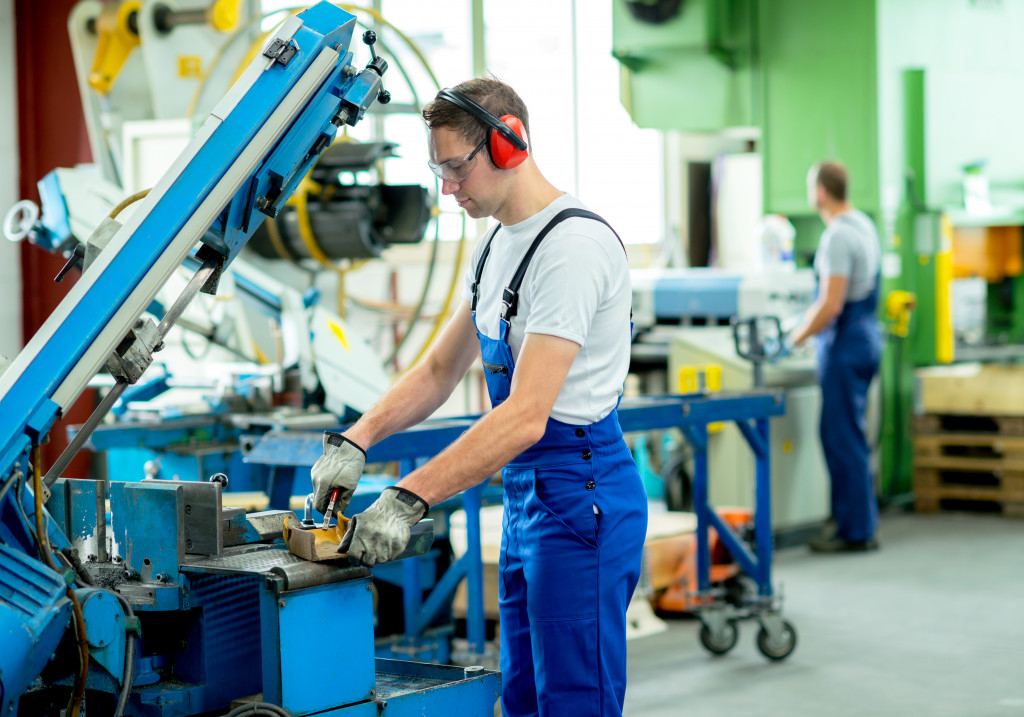- Technology has revolutionized the manufacturing industry by offering unparalleled efficiency, precision, and adaptability.
- Key technologies used in manufacturing include computer vision and 3D printing.
- Robotics and nanotechnology are also used to streamline production and minimize waste.
- Augmented reality visualizes projects, reduces design flaws, and enhances efficiency.
- Future technological advancements in the manufacturing industry will include more advanced robotics.
Manufacturing industries are continuously evolving and advancing with time, giving birth to new technologies that provide more efficient processes, reduce costs, and improve product quality.
In recent years, we have seen some mind-blowing progress and innovation in the manufacturing sector with the emergence of state-of-the-art technologies such as computer vision, 3D printing, robotics, nanotechnology, and augmented reality. This blog will explore the latest technologies in the manufacturing industry that are revolutionizing the production process.
The importance of technology
Technology has revolutionized the manufacturing industry, offering unparalleled efficiencies, precision, and adaptability. Gone are the days of manual assembly lines and tedious quality control.
With technology integration, manufacturers can streamline production, minimize waste, and optimize output. Technology has infused every aspect of the manufacturing industry, from robotics to artificial intelligence, shaping how they produce, package, and distribute goods.
Technologies used in manufacturing
Businesses use different technologies in their manufacturing process. Some of the most widely used technologies are:
Computer vision

Computer vision is a cutting-edge technology that automates the visual components of the manufacturing process. It involves the use of cameras, sensors, and computer algorithms that can be trained to recognize patterns and deviations in the production process.
One great way to integrate computer vision tech into your operations is by investing in innovative machine vision systems that can help detect defects, reduce downtime, and improve production efficiency. This system is designed to monitor and control all aspects of production, providing continuous feedback that can help identify patterns and quickly respond to changes.
3D Printing
3D printing, also known as additive manufacturing, is a groundbreaking technology that has significantly impacted the manufacturing industry. It involves using computer-aided design (CAD) software that creates a digital blueprint of a product that is then produced layer by layer using a 3D printer.
Unlike traditional manufacturing methods such as forging and cutting, which reduce the size of raw materials, 3D printing creates an object by building it layer upon layer. This technology has minimized waste, increased efficiency, and provided customized solutions for customers in various industries, ranging from aerospace and automotive to healthcare and education.
Robotics
Robots are becoming more frequent in manufacturing plants as technology advances. Manufacturing robots, commonly known as industrial robots, can perform some production tasks without human intervention. They operate quickly, accurately, and tirelessly, increasing the manufacturing plant’s production rates.
Additionally, robots can undertake dangerous manufacturing tasks like extreme heat, toxic substance exposure, and heavy lifting, reducing the risks to human laborers. Integration of robots has streamlined the production process, enabling the company to maintain time and quality standards and enhancing workplace safety.
Nanotechnology
Nanotechnology is a technology that deals with creating and applying microscopic structures typically smaller than 100 nm. Nanotechnology is set to revolutionize the manufacturing industry by developing more robust, lighter, and more durable materials with diverse applications.
The application of nanotechnology in manufacturing is wide-reaching, including coatings, composites, electronic products, and smart materials. In addition, nanotechnology in manufacturing has opened up new paths toward environmental protection by reducing material waste and increasing resource efficiency.
Augmented Reality

Augmented reality technology can integrate computer-generated images that interact with the real-time world. The Manufacturing industry can harness this technology by providing employees with a visualization of the project during production.
With AR, workers can visualize the final product, minimize design flaws, enhance efficiency, and shorten the product development timeline. Moreover, augmented reality technology can provide real-time interactions with machines, for instance, streamline maintenance processes, accelerate troubleshooting, and reduce technical errors.
What the future holds
Technology is evolving constantly, and the manufacturing industry must keep up with the latest technologies to maintain a competitive edge. Amongst other things, you can expect to see more advanced robotics that can take on more complex tasks, an increased focus on sustainability through new material technologies, and additive manufacturing processes like 3D printing becoming mainstream in commercial production.
Final thoughts
The manufacturing industry has seen unprecedented progress with innovative technologies such as computer vision, 3D printing, robotics, nanotechnology, and augmented reality. By embracing these technologies, businesses can provide customers with precisely what they want and need and achieve operational excellence.
The implications are enormous, and more developments are expected as technology advances. The story of these technologies has so far been remarkable, and there’s plenty more to come!

